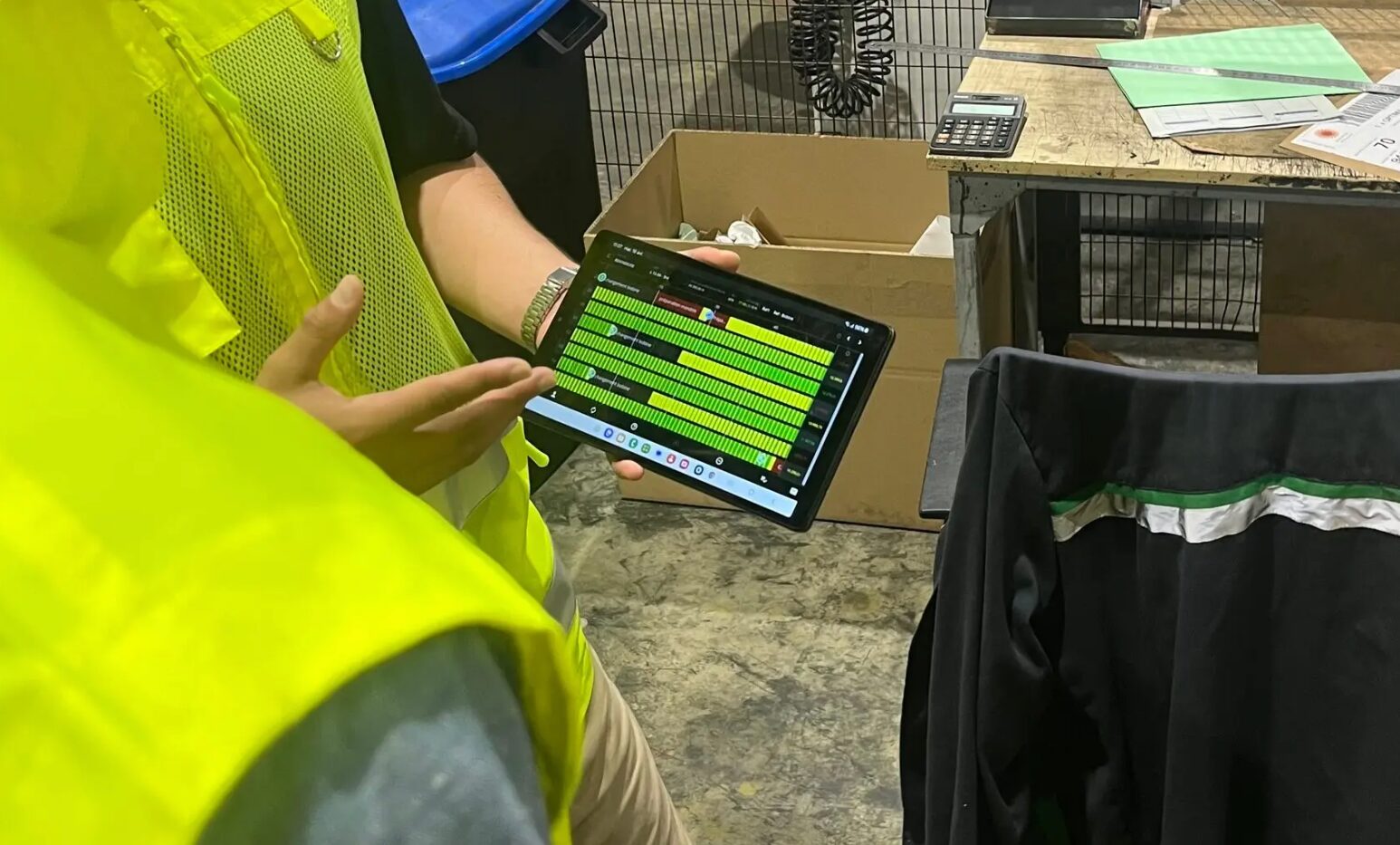Overall Operations Effectiveness (OOE) is a manufacturing metric that measures how effectively equipment is utilized during the entire shift, including planned stops that are excluded from OEE calculations.
Understanding which metric to use depends on your specific manufacturing goals — whether you’re optimizing day-to-day operations, planning strategic capacity investments, or measuring overall factory utilization. This article looks at OOE, its relation to OEE, who should focus on OOE as a metric, and how to track it.
OOE vs. OEE — What’s the Difference?
As the terms are commonly confused, it’s essential that we understand the difference between OOE and OEE.
Overall Operations Effectiveness (OOE)
While OOE is less commonly used than Overall Equipment Effectiveness (OEE), it provides valuable strategic insights, especially if you know when and how to use it. Compared to OEE, it takes a more strategic, high-level view. Its key differentiator is including all shift time in its availability calculation, not just planned time. This means OOE accounts for planned stops that are excluded from OEE calculations, such as:
- Routine maintenance and inspections
Like a vehicle needing regular oil changes, manufacturing equipment requires frequent upkeep. This includes cleaning, servicing, calibrating, and replacing parts to ensure the machinery runs smoothly. - Changeovers and setup time
When production shifts from one product to another, machinery must be reconfigured. The process involves changing tooling, resetting parameters, or modifying the physical setup. - Employee breaks and shift changes
Human resource factors like lunch breaks, shift changes, or training periods also contribute to planned downtime.
Overall Equipment Effectiveness (OEE)
OEE is a lean manufacturing tool and universal best practice to monitor, evaluate, and improve the effectiveness of a production process. This could be an assembly line, packaging line, filling machine, etc.
OEE in production is the factor of three components, and the method of calculation is simple:
Availability x Performance x Quality = OEE
In the case of OEE, the availability component should not include planned downtime. This is the most important difference between OEE and OOE, as they each measure a similar metric, but using different availability numbers. Some examples of unplanned downtime that are included in the OEE calculation are:
- Equipment failure
A sudden breakdown or machinery malfunction that halts production unexpectedly, often requiring extensive repairs. - Material shortages
Insufficient supply of raw materials or delays in material delivery can bring production to a standstill. - Unscheduled stoppage
This includes unexpected events like power outages, human errors, or safety incidents that require an immediate halt to operations.
How is OOE Calculated?
OOE is calculated in a similar way to OEE, but there is a difference in the time period included in the calculations:
OEE = (Uptime / Planned time) × Performance × Quality
OOE = (Uptime / Shift time) × Performance × Quality
The key difference is the time frame each calculation uses:
- OEE uses Planned time (excludes planned stops)
- OOE uses Shift time (includes planned stops)
💡Note: To make sure you get accurate data for either calculation, it is essential that you determine your planned and unplanned downtime.
Why Is OOE Important, and Who Uses It?
Unlike OEE, which excludes planned stops to focus purely on operational efficiency, OOE provides a complete picture of shift effectiveness by including the impact of necessary planned activities. This makes OOE particularly valuable for:
- Strategic planning
OOE helps manufacturers understand how planned activities affect overall shift productivity. When a manufacturer sees their OEE at 85% but their OOE at only 65%, it shows that planned stops (maintenance, changeovers, breaks) consume 20% of shift time. This insight helps optimize the scheduling of these necessary activities. - Capacity planning
OEE can overestimate available capacity by excluding planned stops. OOE provides a more realistic view for production planning by showing true shift utilization, including all necessary planned activities. - Maintenance and changeover optimization
OOE quantifies the impact of planned maintenance windows and changeover times on overall productivity, helping teams prioritize improvements in these areas for maximum shift effectiveness.
Why is OOE Less Commonly Used?
Despite its strategic value, OOE is not as widely implemented as OEE for several reasons:
- Complexity and scope
While planned stops are controllable, they’re often seen as necessary overhead rather than improvement opportunities, making OEE’s focus on pure production efficiency more appealing for day-to-day operations. - OEE came first
As a well-known manufacturing KPI, OEE has a longer and more established history within prominent manufacturing improvement philosophies. - Clarity and focus
OEE’s tight focus on scheduled production provides a clear and universally understood measure of equipment performance during planned operations.
In practice, many organizations start with OEE to address immediate production challenges and improve shop-floor efficiency. Once a certain level of performance maturity is achieved, they then adopt OOE as a complementary metric to gain a more strategic understanding of their overall operational potential. Therefore, while OOE offers a valuable, holistic view, the tactical, actionable nature of OEE has cemented its position as the more widely embraced metric in the manufacturing world.
How to Track OOE?
Tracking OOE requires capturing the complete shift picture, including both production time and planned stops:
Essential data collection needed
- Shift time data
Total time from shift start to shift end. - Planned stops
Maintenance windows, changeovers, breaks, and other scheduled downtime. - Production data
Uptime, units produced, quality metrics.

Implementation approach
Most manufacturers track OOE through manufacturing execution systems (MES) or OEE software that can differentiate between planned and unplanned stops. The key is ensuring your system captures all planned activities that occur during the shift, not just production periods.
Manual vs. automated tracking
While OOE can be calculated manually using shift logs, automated systems provide more accurate data by precisely tracking when planned stops begin and end, eliminating timing errors in manual recording.
For Evocon users, your OOE percentage can be viewed through Reports. To view it, go to your OEE report and scroll down to the table view. Click on the “Columns” option and make “OOE” visible. With that filter selected, you will now see your OOE percentage and can also export your data.

Key Takeaways
Overall Operations Effectiveness (OOE) offers a wider view of equipment utilization by including planned stops in its calculations. While OEE focuses on performance during planned production time, OOE looks at the entire shift, making it valuable for understanding true operational capacity.
For manufacturers looking to optimize beyond the shop floor, OOE is an essential metric. It reveals how planned activities — like maintenance, changeovers, and breaks impact total shift productivity. This enables more informed decisions around scheduling, staffing, and resource allocation.
Although OOE is less widely adopted than OEE, its strategic value becomes clear as manufacturing operations mature. By tracking both OEE and OOE, companies can balance tactical improvements with long-term planning, unlocking greater efficiency across their operations.
Effective tracking of OOE requires reliable data capture across all shift activities. Whether through manual logs or automated systems, consistency and accuracy are critical to turning OOE insights into action.

